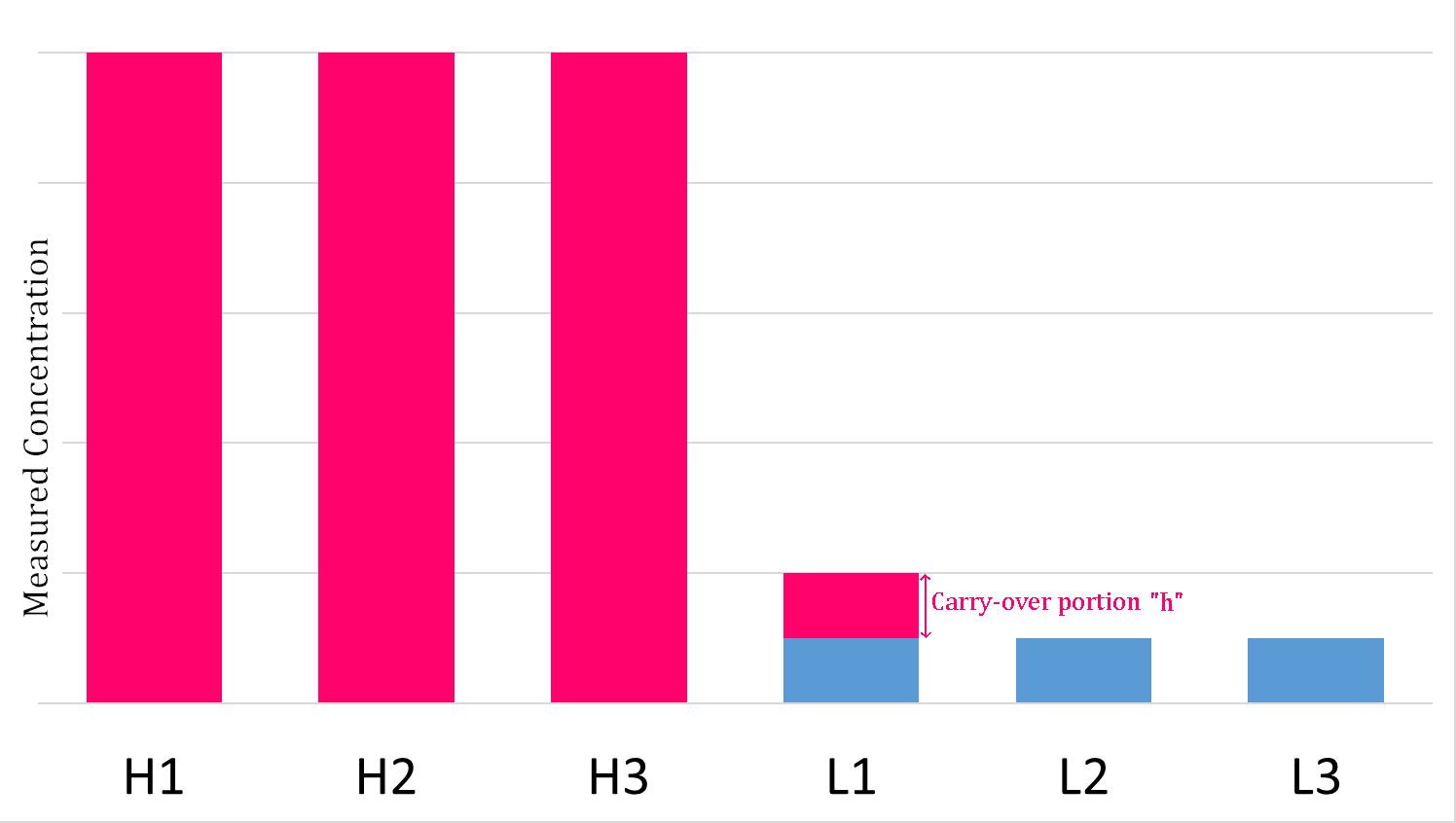Carryover effect on:
[Wikipedia]
[Google]
[Amazon]
The carryover effect is a term used in clinical chemistry to describe the transfer of unwanted material from one container or mixture to another. It describes the influence of one sample upon the following one. It may be from a specimen, or a
 IUPAC made a recommendation in 1991 for the description and measurement of carryover effects in clinical chemistry. The carryover ratio is the percentage of H3 carry to L1 constituting the carryover portion "h". In a design of 3 high samples followed by 3 low samples, h can be calculated as (L1 - mean of L2&L3) / (H3 - mean of L2&L3)
The carryover ratio's acceptance criteria depend on the measurement and the laboratory concerned. For example, 1% carryover of plasma albumin would generally lead to a clinically insignificant effect, while 1% carryover of cardiac High sensitivity Troponin assay would be catastrophic.
IUPAC made a recommendation in 1991 for the description and measurement of carryover effects in clinical chemistry. The carryover ratio is the percentage of H3 carry to L1 constituting the carryover portion "h". In a design of 3 high samples followed by 3 low samples, h can be calculated as (L1 - mean of L2&L3) / (H3 - mean of L2&L3)
The carryover ratio's acceptance criteria depend on the measurement and the laboratory concerned. For example, 1% carryover of plasma albumin would generally lead to a clinically insignificant effect, while 1% carryover of cardiac High sensitivity Troponin assay would be catastrophic.
reagent
In chemistry, a reagent ( ) or analytical reagent is a substance or compound added to a system to cause a chemical reaction, or test if one occurs. The terms ''reactant'' and ''reagent'' are often used interchangeably, but reactant specifies a ...
, or even the washing medium. The significance of carry over is that even a small amount can lead to erroneous results.
Carryover effect in clinical laboratory
Carryover experiments are widely used for clinical chemistry and immunochemistry analyzers to evaluate and validate carryover effects. The pipetting and washing systems in an automated analyzer are designed to continuously cycle between the aspiration of patient specimens and cleaning. An obvious concern is a potential for carryover of analyte from one patient specimen into one or more following patient specimens, which can falsely increase or decrease the measured analyte concentration. Specimen carryover is typically addressed by judicious choice of probe material, probe design, and an efficient probe washing system to flush the probe of residual patient specimens or reagents retained in their bores or clinging to the probe exterior surface before they are introduced into the next patient sample, reagent container, or cuvette/reaction vessel.Significance in carryover assessment
The pathological range of measurement could be of several order to reference interval(e.g.,Sex hormone
Sex hormones, also known as sex steroids, gonadocorticoids and gonadal steroids, are steroid hormones that interact with vertebrate steroid hormone receptors. The sex hormones include the androgens, estrogens, and progestogens. Their effects a ...
, Tumor marker
A tumor marker is a biomarker that can be used to indicate the presence of cancer or the behavior of cancers (measure progression or response to therapy). They can be found in bodily fluids or tissue. Markers can help with assessing prognosis, s ...
, Troponin...etc.). A small portion of carryover could lead to erroneous results.
Carryover assessment
 IUPAC made a recommendation in 1991 for the description and measurement of carryover effects in clinical chemistry. The carryover ratio is the percentage of H3 carry to L1 constituting the carryover portion "h". In a design of 3 high samples followed by 3 low samples, h can be calculated as (L1 - mean of L2&L3) / (H3 - mean of L2&L3)
The carryover ratio's acceptance criteria depend on the measurement and the laboratory concerned. For example, 1% carryover of plasma albumin would generally lead to a clinically insignificant effect, while 1% carryover of cardiac High sensitivity Troponin assay would be catastrophic.
IUPAC made a recommendation in 1991 for the description and measurement of carryover effects in clinical chemistry. The carryover ratio is the percentage of H3 carry to L1 constituting the carryover portion "h". In a design of 3 high samples followed by 3 low samples, h can be calculated as (L1 - mean of L2&L3) / (H3 - mean of L2&L3)
The carryover ratio's acceptance criteria depend on the measurement and the laboratory concerned. For example, 1% carryover of plasma albumin would generally lead to a clinically insignificant effect, while 1% carryover of cardiac High sensitivity Troponin assay would be catastrophic.
References
{{reflist Chemistry